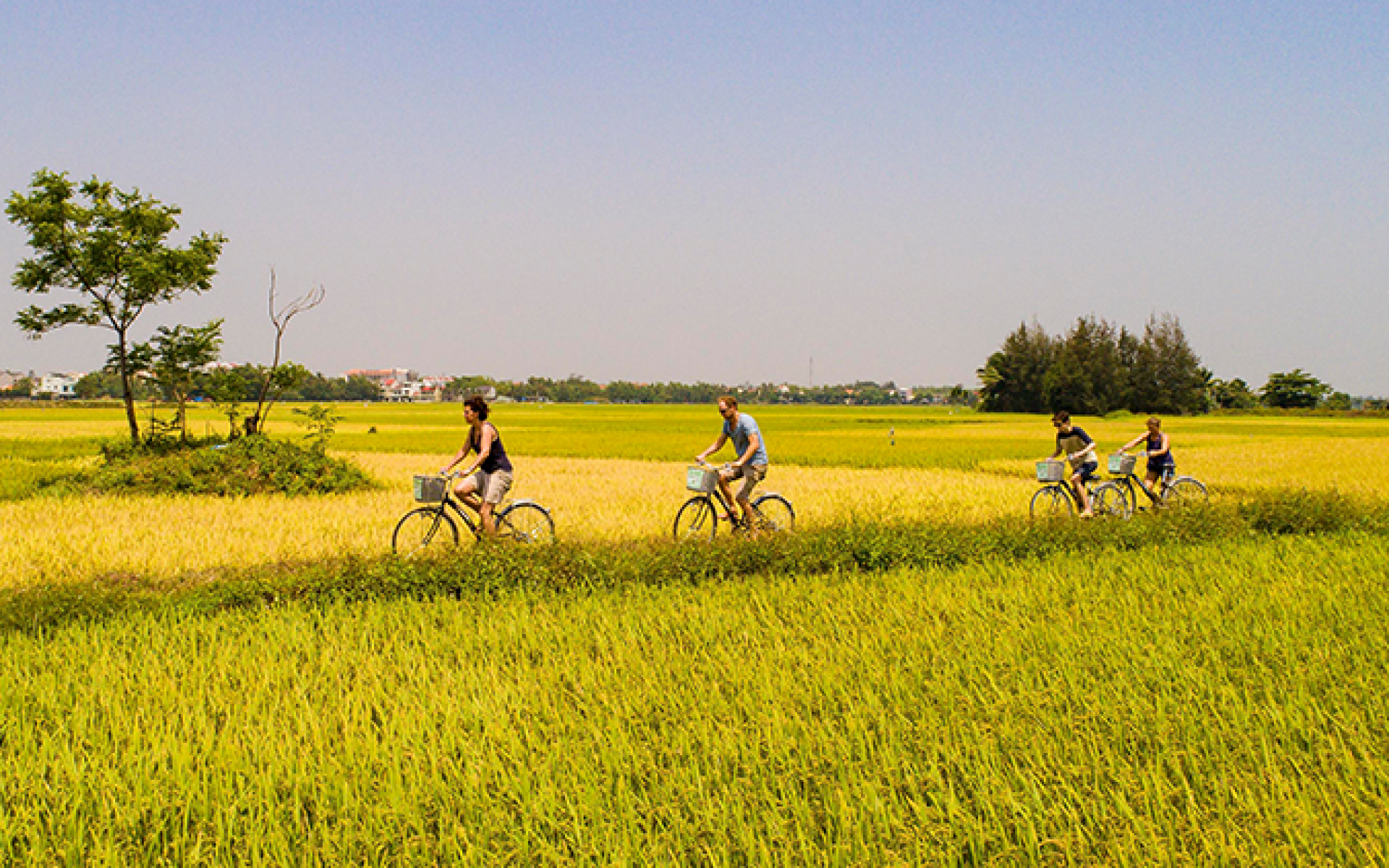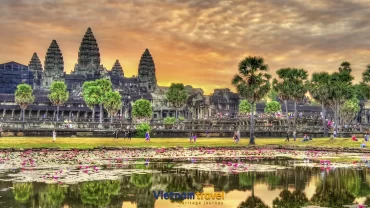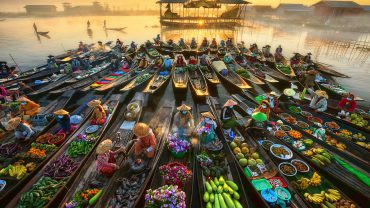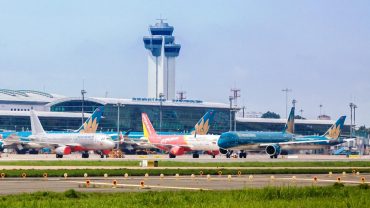Southeast Asia, a region steeped in history, culture, and natural beauty, is a treasure trove for travelers seeking unforgettable experiences. As you plan your journey to Vietnam and other Indochina countries in 2025, it’s crucial to prepare thoroughly to make the most of your adventure. This guide will provide you with essential tips, visa information, and recommendations for must-visit destinations, including UNESCO World Heritage Sites and iconic tourist attractions. Whether you’re drawn to Indochina heritage tourism or simply exploring the region’s diverse landscapes, this article will ensure you’re well-equipped for an unforgettable trip.
1. Visa Requirements for Southeast Asia in 2025

Before embarking on your journey, understanding the visa requirements for each country is essential. Most Southeast Asian nations offer convenient visa options for tourists, but policies can vary:
-
Vietnam Heritage Travel: E-visas are available for up to 30 days, and the process is straightforward. Check the official government website for updates and ensure your passport is valid for at least six months.
-
Cambodia Heritage Travel: Visa-on-arrival is available at major airports and land borders. Alternatively, you can apply for an e-visa in advance.
-
Laos Heritage Travel: Most nationalities can obtain a visa-on-arrival at international airports and land crossings.
-
Myanmar Heritage Travel: An e-visa is recommended for a smooth entry process. Apply online before your trip.
-
Thailand Heritage Travel: Many nationalities enjoy visa-free entry for up to 30 days, but always verify the latest regulations.
Pro tip: Keep digital and physical copies of your visa, passport, and travel insurance for easy access during your trip.
2. UNESCO World Heritage Sites: The Heart of Indochina Heritage Tourism
Southeast Asia is home to some of the world’s most breathtaking UNESCO World Heritage Sites. These destinations are a testament to the region’s rich cultural and natural heritage, making them a cornerstone of Indochina heritage travel.
Vietnam Heritage Travel

-
Ha Long Bay: This iconic natural wonder, with its emerald waters and towering limestone karsts, is a must-visit. Take a cruise to fully appreciate its beauty.
-
Hoi An Ancient Town: A beautifully preserved trading port, Hoi An is a blend of Vietnamese, Chinese, and Japanese influences. Its lantern-lit streets and historic architecture are enchanting.

-
Hue Imperial City: Once the capital of Vietnam, Hue is home to the Imperial Citadel and royal tombs, offering a glimpse into the country’s feudal past.

Cambodia Heritage Travel
-
Angkor Wat: The crown jewel of Cambodia, this sprawling temple complex is the largest religious monument in the world. Sunrise at Angkor Wat is an unforgettable experience.

-
Preah Vihear Temple: Perched on a cliff overlooking the Cambodian plains, this ancient temple is a masterpiece of Khmer architecture.
Laos Heritage Travel
-
Luang Prabang: This charming town is known for its well-preserved Buddhist temples, French colonial architecture, and vibrant night markets.

-
Vat Phou: An ancient Khmer temple complex with a mystical atmosphere, Vat Phou is a hidden gem in southern Laos.
Myanmar Heritage Travel
-
Bagan: With over 2,000 ancient temples and pagodas, Bagan is a spiritual and historical treasure. Hot air balloon rides at sunrise offer breathtaking views.

-
Pyu Ancient Cities: These archaeological sites provide a fascinating glimpse into Myanmar’s early Buddhist civilizations.
Thailand Heritage Travel
-
Ayutthaya Historical Park: The ruins of Thailand’s ancient capital are a testament to the country’s rich history and architectural prowess

-
Sukhothai Historical Park: Another UNESCO-listed site, Sukhothai is known for its well-preserved temples and statues.
3. Top Tourist Attractions in Southeast Asia

Beyond UNESCO sites, Southeast Asia offers a wealth of attractions that cater to all types of travelers. Here are some highlights:
Vietnam
-
Hanoi: The capital city is a blend of old-world charm and modern energy. Don’t miss the Old Quarter and Hoan Kiem Lake.
-
Ho Chi Minh City: A bustling metropolis with a rich history, vibrant markets, and delicious street food.
-
Sapa: Known for its terraced rice fields and ethnic minority cultures, Sapa is a paradise for nature lovers.
Cambodia
-
Phnom Penh: The capital city offers a mix of history and modernity, with attractions like the Royal Palace and the Killing Fields.
-
Siem Reap: Beyond Angkor Wat, Siem Reap is a hub for cultural experiences and vibrant nightlife.
Laos
-
Vientiane: The laid-back capital is home to Buddhist temples, French colonial architecture, and the iconic Patuxai Monument.
-
Kuang Si Waterfalls: Located near Luang Prabang, these turquoise waterfalls are a natural wonder.
Myanmar
-
Yangon: The former capital is known for its colonial architecture and the stunning Shwedagon Pagoda.
-
Inle Lake: Famous for its floating villages and unique leg-rowing fishermen, Inle Lake is a serene escape.
Thailand
-
Bangkok: A city of contrasts, Bangkok offers bustling markets, grand temples, and a vibrant nightlife scene.
-
Chiang Mai: Known for its temples, night markets, and proximity to nature, Chiang Mai is a cultural hub in northern Thailand.
-
Phuket and Krabi: These beach destinations are perfect for relaxation and water activities.
4. Tips for a Memorable Indochina Heritage Travel Experience

-
Respect Local Customs: Southeast Asia is deeply rooted in tradition. Dress modestly when visiting temples and religious sites, and remove your shoes before entering sacred spaces.
-
Plan for the Weather: The region has a tropical climate, so pack lightweight clothing, sunscreen, and rain gear. The dry season (November to February) is ideal for travel.
-
Try Local Cuisine: Don’t miss iconic dishes like pho in Vietnam, amok in Cambodia, larb in Laos, and pad Thai in Thailand. Street food is a highlight of the region.
-
Travel Responsibly: Support local communities by purchasing handmade crafts and avoiding activities that harm the environment or wildlife.
5. Why Choose Indochina Heritage Tourism?!

Southeast Asia’s unique blend of history, culture, and natural beauty makes it an ideal destination for heritage travel. Whether you’re exploring the ancient temples of Angkor Wat, cruising through Ha Long Bay, or wandering the streets of Luang Prabang, you’ll be immersed in a world of wonder and discovery. The region’s UNESCO World Heritage Sites and iconic attractions offer a glimpse into its rich past and vibrant present.
As you plan your trip to Vietnam and other Indochina countries in 2025, embrace the spirit of adventure and respect the heritage that makes this region so special. With careful preparation and an open mind, your journey through Southeast Asia will be an unforgettable experience.
By focusing on Indochina heritage travel, this guide ensures you’ll have all the information you need for an enriching and memorable journey. Don’t forget to capture every moment and share your experiences with fellow travelers. Happy travels!





Comment (0)